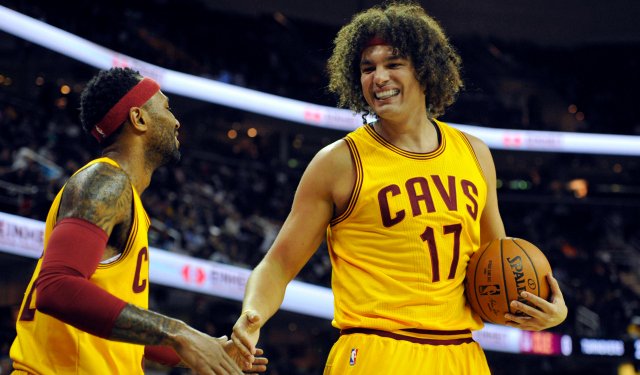Twitter, Noelle Kaufmann @n0elle422
Ex-Cavalier Anderson Varejao celebrating a win with new acquisition and former Cavalier Mo Williams.
The NBA trade deadline: Why so quiet?
March 8, 2016
The NBA trade deadline is a highly anticipated and carefully examined period of time for NBA fans and analysts every year. Playoff contending teams look to increase their depth with savvy veterans whereas non-playoff contenders look for draft picks and young stars to solidify their future. At least one or two significant trades are usually abound. So, why was this season’s deadline the least eventful one in recent memory?
Last year’s trade deadline saw the dishing of elite PG Goran Dragic to the Miami Heat from the Phoenix Suns. It also saw the return of PF Kevin Garnett to his original team, the Minnesota Timberwolves. Not only that, but several other blossoming, young point guards such as Isaiah Thomas, Reggie Jackson, Brandon Knight and Michael Carter-Williams were all dealt away via trade.
In contrast to the exciting and risky moves made last season, the trade deadline that we received this year is so dismissable. It’s difficult to pinpoint which trade was the biggest because quite frankly they are all pretty insignificant. But if one is to be chosen, it would have to be the Orlando Magic letting SF Tobias Harris loose in exchange for the Detroit Pistons` PG Brandon Jennings and PF Ersan Ilyasova. This trade means volumes for the Magic because it will allow them to free up cap space, although they did lose Harris, a quality forward that really began to come into his own this season (averaging 14 points, 2 assists and 7 rebounds a game). The Pistons` frontcourt is already playing great basketball, Harris could compliment it nicely if integrated properly.
On a sad note, 12-year Cleveland Cavaliers C Anderson Varejao was sent packing in a move that did end up helping the Cavs overall. Veteran shooter PF Channing Frye was acquired from the Phoenix Suns; he’ll no doubt spread the floor and provide a bit of help at the power forward spot. But whether the trade was good or bad for Cleveland, it is nothing short of pure agony for Cavs fans seeing Varejao go.
Several bigtime superstars had been constantly rumored to be traded in the upcoming weeks leading toward the trade deadline. Names like Blake Griffin, Dwight Howard, Kevin Love, Al Horford, Jeff Teague and Greg Monroe were some of the players swirling about in the ever-constant NBA rumor mill. However, none of them were dealt.
The main cause for this decline in trading is none other than the NBA’s new salary cap being instituted this offseason. According to the new system, the salary cap is going to be significantly increased, allowing teams to pay their stars far more than before. The salary cap in place limits teams to spend an estimated $70 million, next year’s will skyrocket to roughly $90 million. As a result, players holding expiring contracts that teams would normally feel compelled to deal (the names in the above paragraph) are not as much of a concern. It is more likely that they will stay with their current teams because of the much larger amount of money that the league will be allowing to use.
This is why Lebron James only signed a two year deal with Cleveland when he returned in the 2013-14 offseason. He knew that in two years the salary cap was going to increase. It is also probably why teams were so much less inclined to dish players during this year’s deadline.
But do not fret NBA fanatics.
The good news to take away from this is that while the NBA trade deadline was hindered due to the new salary cap, the actual offseason will be that much more riveting as teams will have much more money for spending and a plethora of superstars to try and handcuff. So grab your popcorn and let the offseason blockbuster trade predictions commence.
